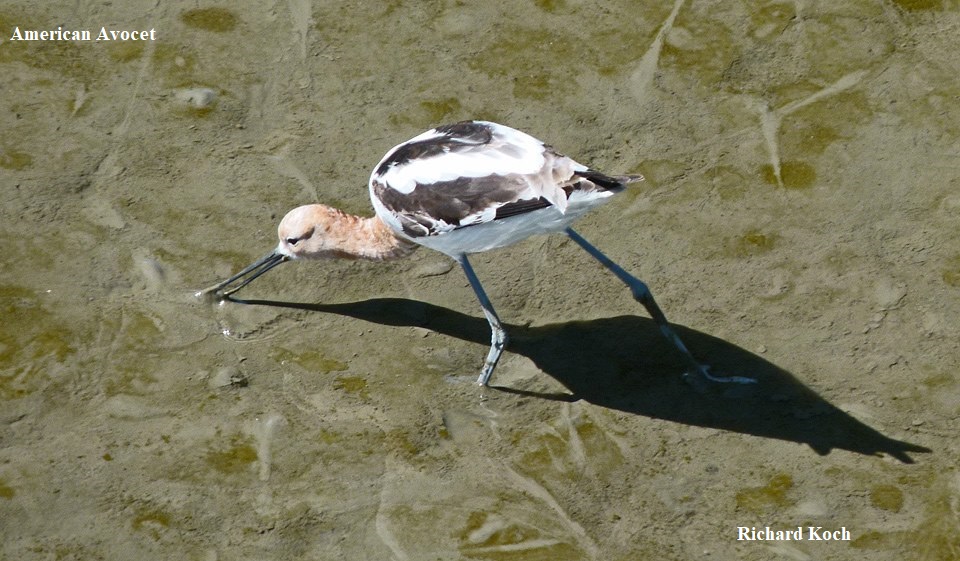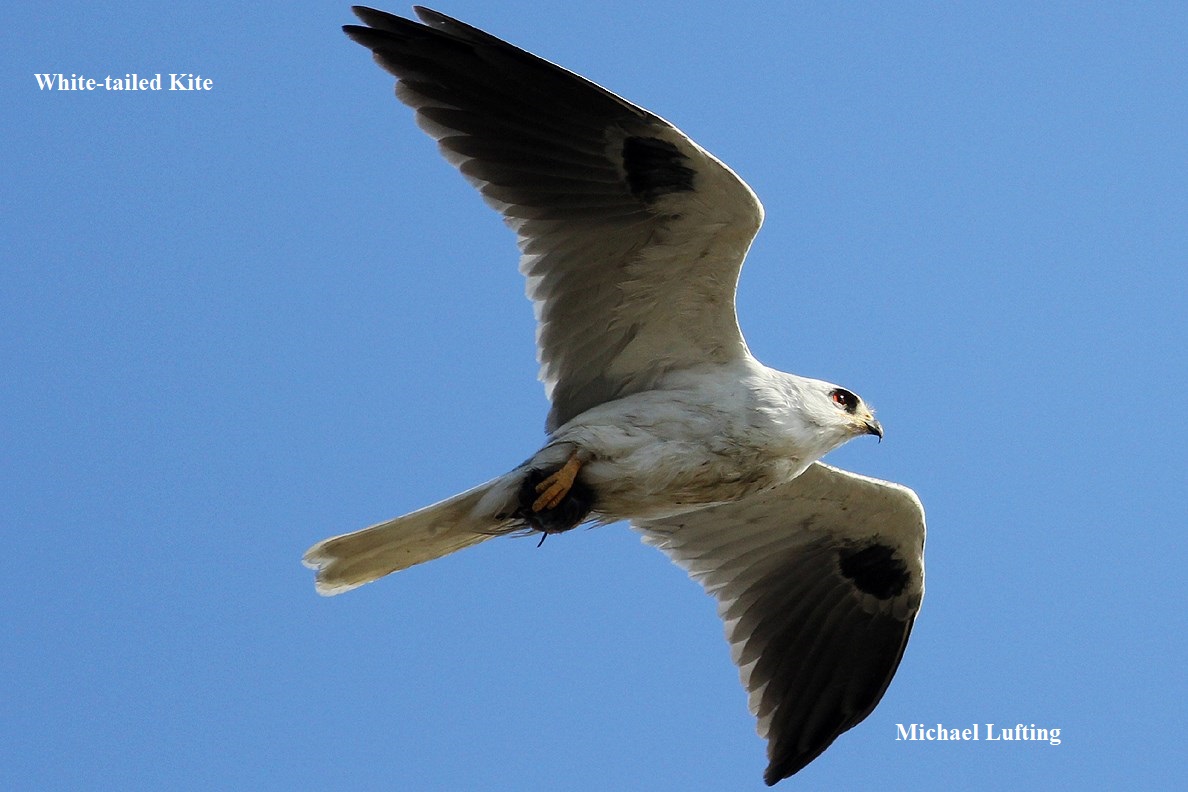Birds
269 species
Don Edwards San Francisco Bay National Wildlife Refuge is home to 269 different bird species. Here you can find the complete list, a slideshow, and some featured species. Clicking on any of the images on the right will allow you to see them in their original high resolution.
For the complete bird species list.
For a slideshow of some bird species.
________________________________________
Common Name: American Avocets
Scientific Name: Recurvirostra americana
Habitat: Salt ponds, tidal flats, marshes
Fast Facts: This bird species is known to physically strike other bird species such as Northern Harriers or Common Ravens. They are also known to lay eggs in the nest of another female American Avocets or even those of other species' nests. Within 24 hours of hatching, the chicks of this species can leave their nest to walk, swim and even dive to escape predators.
For Additional Reference:
________________________________________
Scientific Name: Hirundo rustica
Habitat: Uplands
Fast Facts: A male of this bird species who does not have a nest may kill the nestlings of another pair which cause that pair to break up and provides an opportunity to mate with the female of that nest. The parents of a nest may get help from other birds to feed their young, often older siblings, but can be unrelated Barn Swallows. According to legend, this bird species has a forked tail because the gods shot fire for stealing fire from the gods to bring it to humans, which permanently singed the swallow's tail.
For Additional Reference:
________________________________________
Scientific Name: Rhynchops niger
Habitat: Open bay, salt ponds, salt pond levees and salt pond islands
Fast Facts: This bird species is able to hunt fish in early morning or darkness by skimming through the water with their bill as it flies along. This foraging style is unique to the skimmer family and is not shared with any other bird species in North America. One of the oldest recorded Black Skimmers was 23 years in California.
________________________________________
Scientific Name: Athene cunicularia
Habitat: Grasslands
Fast Facts: This owl species tends to spend long periods of time underground. This owl species will make its home in piles of PVC pipe, buckets, tubing and other human-made materials in the absence of homes made by ground squirrels, prairie dogs, desert tortoises or other burrowing animals. In preparation of offspring, these owls will carpet the entrances to their homes with animal dung to attract prey.
For Additional Reference:
________________________________________
Common Name: California Least Tern
Scientific Name: Sterna antillarum browni
Habitat: Salt ponds, open bay, salt flats, salt pond levees, salt pond islands
Fast Facts: This bird species will hunt for prey by diving at short depths into the water or by briefly skimming the water's surface. In order to defend themselves from predators, adults will divebomb and defecate on the intruder. Chicks will freeze to attempt being detected by predators. This bird species remains endangered to this date.
For Additional Reference:
________________________________________
Common Name: California Ridgway Rail (California Clapper Rail)
Scientific Name: Rallus longirostris obsoletus
Habitat: Tidal marsh, tidal sloughs
Fast Facts: This bird species has special glands that allow it to drink salt water. This bird species rarely flies, instead mostly foraging for prey at the surface or from shallow probes using their bills to dig into substrate. Their chicks are carried on adults' backs during periods of hide tide or when crossing open water.
For Additional Reference:
________________________________________
Scientific Name: Aquila chrysaetos
Habitat: Uplands
Fast Facts: This species tends to nest on cliffs, but also in trees, on grounds, windmills, or electrical transmission towers. They can also fly at speeds close to 200 miles per hour. Some eagles also like to participate in aerial play where they carry sticks and dead prey high into the sky then drop then retrieve the dropped item.
For Additional Reference:
________________________________________
Common Name: Long-billed Curlew
Scientific Name: Numenius americanus
Habitat: Mudflats, tidal flats, tidal marsh, salt ponds
Fast Facts: The bill of this species is best adapted for capturing shrimp, crab or burrowing earthworms; but they also hunt grasshoppers, beetles, caterpillars, spiders. Their bills are also used to make depression in the ground for starting a nest. The mother tends to remain with the chicks until two to three weeks after hatching and leaves their care with her mate. The mate does not take offense as it is common for them to mate again the following year.
For Additional Reference:
________________________________________
Scientific Name: Circus cyaneus
Habitat: Uplands
Fast Facts: Despite not being related to owls, this bird species tends to rely on similar characteristics to owls such as the shape of their face to promote hearing and sight. Although they tend to hunt small mammals and small birds, they have know to subdue larger animals like rabbits and ducks by drowning them. The oldest Northern Harrier was 15 years old.
For Additional Reference:
________________________________________
Common Name: Western Snowy Plover
Scientific Name: Charadrius alexandrinus nivosus
Habitat: Dried salt ponds, salt flats, levees and sandy beaches
Fast Facts: This species will nest three eggs that often look like sand and are easy to miss. Mothers will often use anything they can find to build their nest such as depressed areas from human footprints, rocks, shells, kelp, driftwood. This species is particularly vulnerable to humans as cars, bikes, kites and pets tend to have detrimental impacts to them during the breeding season.
For Additional Reference:
________________________________________
Common Name: White-tailed Kite
Scientific Name: Elanus coeruleus
Habitat: Uplands
Fast Facts: This species of bird has red eyes. They are also capable of laying two egg clutches in a single breeding season. This bird gets its name from its ability to hover in the air like a kite with minimal flapping after catching a good headwind in order to remain in air.
For Additional Reference:
________________________________________




